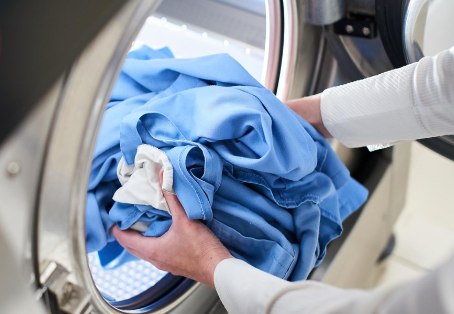Dry cleaning plays a crucial role in fabric restoration, offering a gentle yet effective solution for renewing damaged items. Whether it’s removing stains, odors, or restoring the texture and color of fabrics, dry cleaners can breathe new life into garments and textiles that have been compromised by wear, age, or environmental factors. In this article, we’ll explore the role of dry cleaning in fabric restoration and how it can help revive damaged items to their former glory.
Removing Stubborn Stains and Odors
One of the primary benefits of dry cleaning in fabric restoration is its ability to remove stubborn stains and odors that traditional washing methods may struggle to address. Dry cleaning solvents are specifically formulated to dissolve and lift stains without saturating the fabric, making them ideal for delicate or heavily soiled items. From food and beverage stains to pet odors and smoke smells, dry cleaning can effectively eliminate unwanted marks and smells, restoring the freshness and cleanliness of garments and textiles.
Preserving Fabric Integrity
Unlike traditional washing machines, which rely on water and agitation to clean fabrics, dry cleaning minimizes the risk of damage to delicate or fragile materials. The gentle cleaning process of dry cleaning solvents helps preserve the integrity of fabrics, preventing shrinking, stretching, or distortion that can occur with water-based washing. By maintaining the fabric’s original texture, color, and shape, dry cleaning ensures that restored items look and feel like new, even after years of wear.
Reviving Color and Texture
Over time, fabrics can lose their vibrancy and luster due to exposure to sunlight, pollutants, and other environmental factors. Dry cleaning helps revive the color and texture of fabrics by removing built-up dirt, dust, and residues that dull their appearance. Additionally, professional dry cleaners may use specialized treatments and techniques to brighten colors and restore the softness and suppleness of fabrics, enhancing their overall look and feel.
Addressing Water Damage and Mold
Water damage and mold growth can wreak havoc on fabrics, causing discoloration, musty odors, and structural damage. Dry cleaning offers an effective solution for addressing water-damaged items, as it doesn’t rely on water to clean fabrics. Instead, dry cleaning solvents penetrate deep into the fibers, lifting away moisture and mold spores without saturating the fabric. This helps prevent further damage and mold growth while restoring the cleanliness and freshness of affected items.
Extending the Lifespan of Garments and Textiles
By removing dirt, stains, and odors and preserving the integrity of fabrics, dry cleaning helps extend the lifespan of garments and textiles. Regular dry cleaning can help prevent premature wear and tear, allowing you to enjoy your favorite items for longer. Additionally, by restoring damaged items to their former glory, dry cleaning can save you money on costly replacements and repairs, making it a cost-effective investment in the long run.
Conclusion
In conclusion, dry cleaning plays a vital role in fabric restoration, offering a gentle yet effective solution for renewing damaged items. Whether it’s removing stubborn stains and odors, reviving color and texture, or addressing water damage and mold, dry cleaning can help breathe new life into garments and textiles that have been compromised by wear, age, or environmental factors. By preserving fabric integrity and extending the lifespan of items, dry cleaners dubai Dubai allow you to enjoy your favorite pieces for longer, saving you time, money, and hassle in the process.
FAQs
1. Can dry cleaning remove all types of stains?
While dry cleaning is effective at removing many types of stains, some stubborn stains may require specialized treatment. It’s essential to communicate any specific stains or concerns to your dry cleaner for the best results.
2. How often should I dry clean my garments and textiles?
The frequency of dry cleaning depends on factors such as how often the item is worn or used and its exposure to environmental factors. As a general rule, garments and textiles should be dry cleaned as needed to remove stains, odors, or other signs of wear.
3. Is dry cleaning safe for all types of fabrics?
Dry cleaning is generally safe for most types of fabrics, including delicate or fragile materials. However, it’s essential to consult with a professional cleaner to assess the fabric and any care instructions before proceeding.
4. Can dry cleaning prevent mold growth on fabrics?
Dry cleaning can help prevent mold growth on fabrics by removing moisture and mold spores without saturating the fabric. Additionally, storing items in a clean, dry environment can help reduce the risk of mold growth between cleanings.
5. Are there any fabrics that should not be dry cleaned?
Some fabrics, such as leather, suede, and fur, are not suitable for dry cleaning and require specialized cleaning methods. It’s crucial to follow the care instructions provided by the garment manufacturer or consult with a professional cleaner for guidance.

